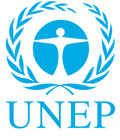The UN Environment Programme (UNEP) released two reports on potential environmental impacts of metals flows and cycles during the 12th International Resource Panel (IRP) Meeting: High Level Dialogue on Resource Efficiency and Sustainable Management of Metal Resources, held on 24 April 2013, in Berlin, Germany.
 24 April 2013: The UN Environment Programme (UNEP) has released two reports on potential environmental impacts of metals flows and cycles. The reports were launched during the 12th International Resource Panel (IRP) Meeting: High Level Dialogue on Resource Efficiency and Sustainable Management of Metal Resources, held on 24 April 2013, in Berlin, Germany.
24 April 2013: The UN Environment Programme (UNEP) has released two reports on potential environmental impacts of metals flows and cycles. The reports were launched during the 12th International Resource Panel (IRP) Meeting: High Level Dialogue on Resource Efficiency and Sustainable Management of Metal Resources, held on 24 April 2013, in Berlin, Germany.
“Environmental Risks and Challenges of Anthropogenic Metals Flows and Cycles” and “Metal Recycling – Opportunities, Limits, Infrastructure” outline the environmental challenges of metals and potential contribution of recycling to mitigate them, and improvements required to metal recycling systems, respectively.
The reports suggest that only a systemic approach, for example through the promotion of resource efficiency, improved materials recycling and life cycle thinking, is appropriate to meet the challenges of the 21st century.
The reports include recommendations for a workable sustainable metals management system, including: applying certified systems based on Best Available Technologies (BATs) and other measures increasing energy and entropy efficiency for mining and recycling industries globally; to set priorities for the recycling for different metals, such as base metals, special metals, critical-technology metals; that policy targets for recycling must account for the loss of metals due to mixing, must not exceed physical, technological and thermodynamic limits, and should not prioritize some metals at the inadvertent expense of others; policy makers set appropriate targets from a life-cycle perspective by drawing on expertise and tools available within the recycling industry; and product designers should take life-cycle approaches as well as metallurgical knowledge and recycling system simulation into account when designing new products.
The reports also note that: weight-based targets hinder rather than promote recycling of the many critical elements in complex products, usually present in very low concentrations; targets that go beyond what is thermodynamically possible are likely to fail; system optimization and design can further increase recycling rates and decrease environmental impacts; and primary production energy-efficiency increases can be achieved by improved process efficiency and use of waste streams (e.g. fly ash, sludge, slags and precipitates) as sources of metals. [UNEP Press Release] [Publication: Environmental Risks and Challenges of Anthropogenic Metal Flows and Cycles] [Publication: Metal Recycling: Opportunities, Limits, Infrastructure] [12th IRP Meeting] [IRP Website] [UN Press Release]